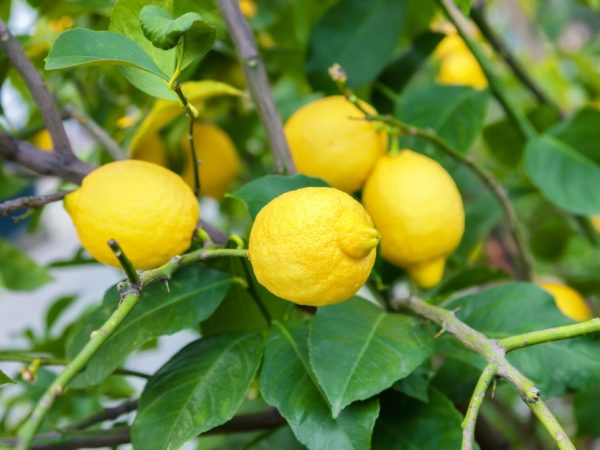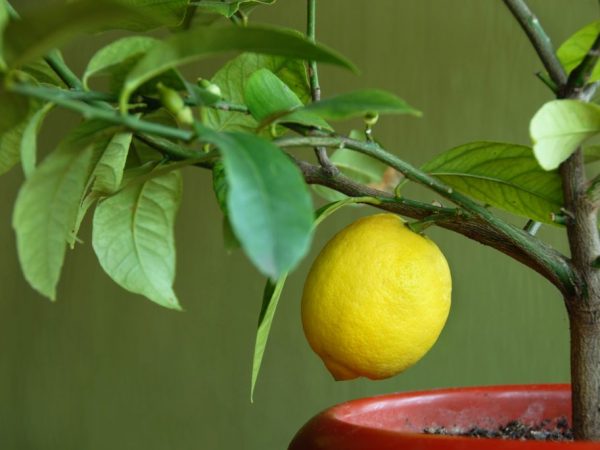Growing Lemon Jubilee
Growing citrus fruits at home has its own characteristics, depending largely on the choice of the variety. Lemon Jubilee is quite suitable for growing in an apartment. To get quality fruits, you need to familiarize yourself with the characteristics of the variety and the requirements for growing and care.

Growing Lemon Jubilee
general characteristics
The jubilee variety was bred by Uzbek scientists from the Novogruzinsky and Tashkent varieties. The hybrid inherited the best qualities of its donors: large fruit size, high yield, unique reproductive ability, successful fruit formation with a low level of moisture and soil. Drought tolerance is one of its main advantages.
The plant blooms all year round, the fruits may ripen unevenly. In the Yubileyny lemon, fruiting occurs early - by the 2nd year of life, it already yields up to 1 kg of healthy fruits (with proper care). A typical adult produces an average of 800 g of lemons. The fruit ripens for about 8 months, the exact time depends on environmental conditions. To prevent the branches from breaking under this weight, they are tied to a tree.
According to the description, the height of the tree is 1.5 m. It does not need crown formation. The branches are strong, the leaves are dark green oblong in shape, harsh to the touch, with a large plate. Flowers have 10-15 white inflorescences. There are pores on the branches that secrete essential oils and phytoncides, exuding the same lemon scent.
Landing
Lemon saplings of the Yubileiny variety are purchased in a specialized store or grown independently.
The specimen should be large, ripe, bright yellow, free from defects. You do not need to dry the seeds, otherwise they will not germinate. To stimulate growth and rooting, they are treated with special preparations.
Small pots or plastic food jars are suitable as containers for seedlings. Holes are made at the bottom and a drainage of 1.5 cm is covered with pebbles or nutshells. To increase the chances of success, it is worth planting about 20 seeds at the same time - not everyone will rise and undergo the vaccination.
Fertile, loose soil is selected for planting. It can also be bought or made at home from humus, earth, peat and sand. The bones are tamped 2 cm into the moistened earth in containers.
The temperature in the room with the seedlings should be at least 17 ° C. The greenhouse effect in the form of cut-off plastic bottles on top contributes to faster growth and better development of the plant. Watering until the ground cracks cannot be carried out - the seeds can become moldy. In greenhouses, seedlings are kept until at least four leaves appear, then they move to a well-lit place without direct sunlight.
Care

The plant needs artificial lighting
Lemon care Jubilee requires special conditions:
- maintaining a humid indoor climate - spray and wash the leaves;
- artificial lighting in autumn and winter;
- regular transplants with a lump of earth: the capacity should be larger in size, in the first years the transplant is done annually, then the frequency is reduced;
- top dressing: during the period of active growth - from February to autumn - lemon is fertilized with liquid organic matter and minerals;
- formation: to give density to the plant and enhance the growth of shoots in the first year, pinching is done - the crown is formed by weekly turning the container 90 ° C.
If the lemon blooms for up to a year, all flowers are immediately cut off. After spending its strength, the plant will weaken.
Diseases and pests
The sensitive plant of the Yubileiny lemon is often attacked by parasitic insects, which negatively affects its growth and development. For preventive purposes, leaves and branches are regularly examined: the sooner parasites are found, the easier it is to get rid of them.
The most common pest in lemons is the scale insect. They recognize it by tracks in the form of 5 mm elongated plates and a sticky coating. The insect infects not only one plant, but in advanced cases, and nearby. In the fight against the scabbard, insecticides Actellik or Aktara will help. The frequency of spraying is about 4 times a fortnight. However, the fruits after such disinfection should not be eaten. As an option - the use of tobacco mosaic and soap solution, kerosene.
Small white dots, folded leaves and cobwebs are a sign of a spider mite attacking a young plant. Destroy it with sulfur or poisonous chemicals. Keeping a lemon under the rays of an ultraviolet lamp will help not only get rid of the tick, but also temper it from pests and diseases for the future.
Diseases are caused either by improper care or by infection.
- Tarnished leaves and thin stems indicate a lack of nutrients. The flower pot must be rearranged to the east side and additional feeding must be carried out to provide a rush of light.
- Falling leaves indicate a lack of moisture. Spray the soil in the pot.
- If there is no flowering, it's time to transplant the flower into a larger pot and feed it.
Conclusion
Growing lemon seedlings at home will allow the owner to get high-quality fruits of his own production. The main rule is compliance with all agronomic recommendations for planting and caring for the plant.


